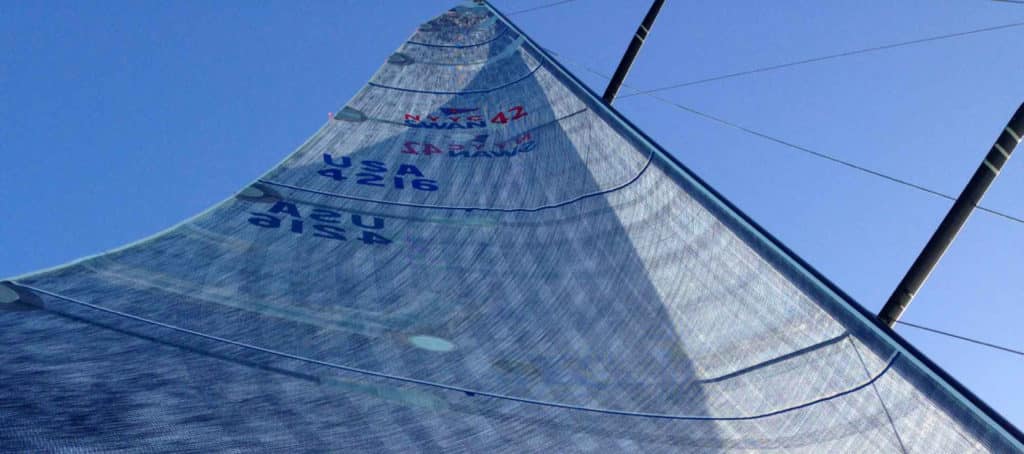
When I learned to trim a mainsail, the instructions were pretty simple: Trim the boom inside the rail, steer up into the wind, and keep an eye on the sail just behind the mast for the first signs of a luff. And don’t cleat the main, or you might get wet.
Over my years of racing, I’ve learned to watch the angle of the top batten to try to point as close to the wind as possible. Sighting from under the boom, I trim the sheet until the two are parallel, except in waves or heavy winds, when it’s much faster to let the sail twist open a little. This approach has worked on cruising boats I’ve sailed, too, but reading Jeremy McGeary’s story on mainsails, I noticed a problem. On many new cruising mains, my trusty top batten no longer exists. These new sails can do lots of clever tricks–they can flake, they roll inside the boom, or they roll in the mast. But a rapidly increasing number are sold for in-mast furlers and have vertical battens or no battens at all.
With any main, you can still sight up the leech to see how tightly the sail is trimmed, then experiment with different settings while watching wind and speed instruments. This is a good way to improve your trimming eye, unless you fall prey to what may be the ultimate obstacle to good trim for a mainsail–a difficulty I encountered last year on a bareboat charter. Standing at the wheel with the bimini up, I couldn’t see any part of the mainsail. Sure, I could engage the wheel brake or the autopilot, lean out over the stern pulpit, and have a look, but that got old in a hurry. Fortunately, the solution to this is easy, and it was in evidence on nearly every boat with a pilothouse, hard top, or bimini at last winter’s Miami Boat Show: They all had windows above the helmsman’s head.
How high your boat will point and how fast it will sail upwind depend on more than its mainsail. At least as important are stability, underbody shape, and headsail sheeting angles, not to mention good sails and a clean bottom. But the fundamental goal remains the same for all boats: balance the helm so the rudder works as little as possible. On a racecourse, a balanced helm is plain faster. For anyone else, it just makes sense not to fight the wheel, and it’s easier on the autopilot, too.
As in life, when I sail I’m always looking for tips on improving balance. If the bow falls off when I ease the mainsheet in a puff, I know that’s a sign of leeward helm, so maybe I should tighten the boom vang to help the leech hold its shape. This can be done even if you have a solid, non-adjustable vang with an in-boom furler; according to Dave Anderson of Schaefer, which makes the Boom Furler, you can just “turn the mandrel [furler] a little.”
Want to solve the more common problem of weather helm? I start by tightening the outhaul, although I’ve learned the hard way that this has its limits. A tired outhaul can fail if you’re too enthusiastic on the winch handle…
This article originally appeared in the June 2006 issue of CW.








